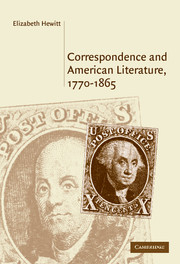Introduction: Universal letter-writers
Published online by Cambridge University Press: 22 September 2009
Summary
In the aftermath of the September 11 attacks in 2001, another terror spread through the United States, as anxieties about biological weapons being delivered by post in private letters turned the innocuous act of mail receipt and delivery into a site of terror and a potential act of terrorism. Rumors that terrorist instructions were being encrypted into email seemed to corroborate the belief that sites of interpersonal communication were now hazardous spaces. This conjunction between postal communication and acts of violence, of course, had been realized before, as the last decade of the twentieth century seemed to illustrate with a particular intensity: Ted Kaczynski's (‘Unibomber’), letter bombs; computer viruses that were increasingly spread by email; the seeming tendency of American post-office workers to turn from the monotony of mail-sorting to murderous rampages (a phenomenon that coined the phrase “going postal”). As we will see, this conjunction is not even a twentieth-century phenomenon. Early republican novels, for example, often describe letters as disseminating particular kinds of social injuries: because of letters, women are seduced, or lovers commit suicide. And in the antebellum period, abolitionist writing was often described by proslavery ideologues as a “plague” disseminated through the American South by way of the national post office. Even the phrase “going postal” has a nineteenth-century analogue in the tale of another disgruntled post-office worker, Bartleby, who finds himself drawn to a very different form of workplace violence.
- Type
- Chapter
- Information
- Correspondence and American Literature, 1770–1865 , pp. 1 - 15Publisher: Cambridge University PressPrint publication year: 2004



